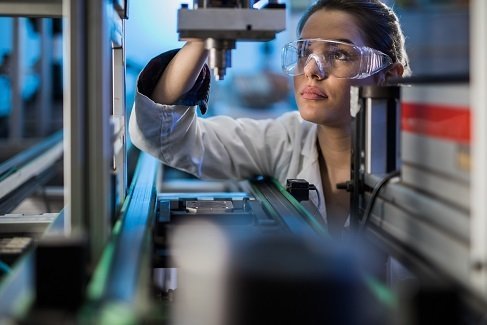How Dr. Peter Vint Became the High Performance Director for the U.S. Olympic Committee’s (USOC) Sports Performance Division
Before he became a high performance director at the USOC, Dr. Peter Vint grew up in a small farming community in Northern Illinois.
“My graduating class was 24 people,” he says. “We didn’t have AP classes or anything like that. I never had the chance to take calculus in high school, but I was really competitive in sports and had really good science and math teachers.”
Later in college, he was watching one of those up close and personal segments with the Olympic team and there was a feature with a biomechanist measuring the jumping and spiking performance of the men’s volleyball team. “As a sports enthusiast, thatwas like the coolest thing ever,” he recalls.
“The next day I went to my academic advisor and said, ‘I saw this thing on TV, and [Tweet “all I know is this is what I’m going to do forever.””]
Biomechanics isn’t something a young kid probably has on his radar as a career, but just like Vint did in the 1980s, many would-be biomechanists found their calling through sports and eventually ended up working with the USOC.
Read how Dr. Vint and other sports scientists help Olympic athletes go for the gold.
Snowboarding and Physics
ACCELERATION = NET FORCE/MASS
Let’s say a snowboarder weighs 65kg, and they are sliding down the side of the halfpipe. And the acceleration in this situation will be caused by gravity, which is known to be about 9.8 m/s2.
To find the force of the object, you just have to multiply the mass (65kg) with the known acceleration (9.8 m/s2). In the end, you should come up with 637 m*kg/s2 (meters times kilograms divided by seconds squared). And in this instance, kinetic energy can be used as the force.
Biomechanics isn’t something a young kid probably has on his radar as a career, but just like Vint did in the 1980s, many would-be biomechanists found their calling through sports and eventually ended up working with the USOC.
Read how Dr. Vint and other sports scientists help Olympic athletes go for the gold.
Snowboarding and Physics
ACCELERATION = NET FORCE/MASS
Let’s say a snowboarder weighs 65kg, and they are sliding down the side of the halfpipe. And the acceleration in this situation will be caused by gravity, which is known to be about 9.8 m/s2.
To find the force of the object, you just have to multiply the mass (65kg) with the known acceleration (9.8 m/s2). In the end, you should come up with 637 m*kg/s2 (meters times kilograms divided by seconds squared). And in this instance, kinetic energy can be used as the force.






Leave A Comment
You must be logged in to post a comment.